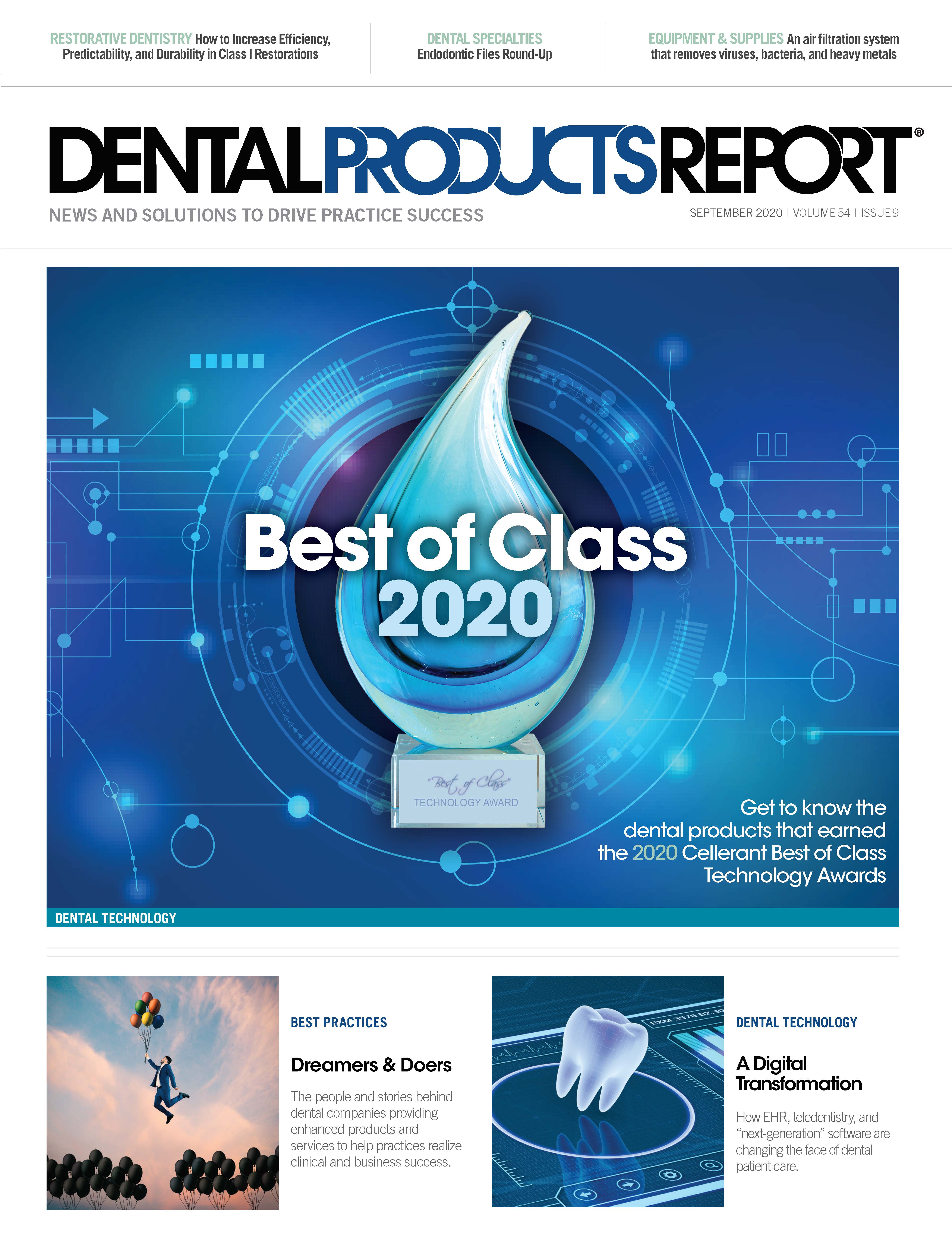Bluephase® PowerCure™
- Reliable curing performance for all light-curing materials due to polywave LED
- Short curing times starting from 3 seconds due to a high intensity up to 3,000 mW/Cm2
- Wide 10 > 9-mm light guide for time-saving single-exposure curing procedures
- Additional Pre-Cure program
Ivoclar Vivadent
716-691-0010 | ivoclarvivadent.com
With more patients demanding tooth-colored restorations, dentists face multiple choices and challenges in providing durable, functional, and esthetic solutions, especially when restoring large posterior class I and II lesions.1,2 The most common esthetic solution for posterior carious lesions involves light-cured, tooth-colored direct composite restorative materials.1,2 Using tooth-colored filling materials allows dentists to remove the carious lesion while preserving as much natural tooth structure as possible and seal the tooth from recurrent decay.
Although direct composite materials satisfy patient preference for esthetics, they often present dentists with a multitude of technique-sensitive and time-consuming protocols that require proper isolation of an operative site that is hard to access and hindered by poor visibility.3-5 The use of efficient composite systems can limit this challenge. In addition, the key to restorative durability and functionality in direct posterior cases: proper photopolymerization of incrementally placed composite layers. Proper photopolymerization is critical for preventing material shrinkage, postoperative sensitivity, and marginal leakage.6-8
Advances in direct composite monomer technology and LED curing technology provide dentists with more efficient and simplified direct composite restorative systems that optimize treatment time without sacrificing the final restoration’s predictability and long-term durability.
Clinical Case
An 18-year-old female patient presented to the dental practice for a routine hygiene appointment and checkup. During a thorough clinical exam, probing detected “stickiness” on the occlusal surface of tooth No. 18, which was verified as isolated Class I occlusal caries (Figure 1). The agreed-upon treatment plan involved removing the caries using a conservative and minimally invasive approach to maintain the integrity of the tooth structure and retain as much enamel as possible for a durable, long-lasting restoration. The tooth would be restored using a tooth-colored composite material.
The patient was anesthetized, and the site was isolated using a rubber dam. A carbide bur was used to remove the carious lesion followed by a diamond bur to smooth and refine the angles of the preparation (Figure 2).
With the preparation design complete, the phosphoric acid, Total Etch from Ivoclar Vivadent, was applied to the enamel for 15 seconds (Figure 3) and dried using the Warm Air Tooth Dryer from A-dec. The self-etching technique takes advantage of the universal adhesive technology in Adhese Universal from Ivoclar Vivadent: Only the enamel is etched, creating maximum bond strength to enamel. The need to etch dentin is eliminated, which protects and minimizes the chances of hypersensitivity.
After the preparation was thoroughly rinsed, Adhese Universal was applied (Figure 4), using the Adhese Universal VivaPen single-unit dose applicator, and air-dried (Figure 5). The adhesive was light cured for 3 seconds (Figure 6) using the Bluephase PowerCure, a high-intensity LED curing light from Ivoclar Vivadent.
Next, the first layer of flowable direct composite—Tetric PowerFlow from Ivoclar Vivadent—in shade IVA was placed (Figures 7-8) as a dentin replacement and cured for 3 seconds using the Bluephase PowerCure. This flowable composite coats the internal aspects of the cavity and ensures a complete seal against microleakage and recurrent caries. During polymerization, the initial visual high translucency gradually changes to a more opaque shade that is close to that of natural dentin in value. The material’s final opacity conceals the stained underlying tooth structure to optimize the esthetics of the final restoration.
After the flow layer was placed and cured, a layer of Tetric PowerFill bulk fill composite from Ivoclar Vivadent in shade IVW was placed in a single 4-mm increment (Figure 9), sculpted using a contouring instrument and light-cured for the manufacturer-recommended 3 seconds. Once curing and occlusal adjustments were made, the restoration was finished and polished using a silicone polisher (Figure 10).
Long-Lasting, Good-Looking Results
Using a single coordinated system of durable restorative materials and efficient, streamlined protocols for Class I restorations helps clinicians save chair time without compromising the integrity, predictability, and long-term durability of the final restoration.
Shortened 3-second cure times for 4-mm layers of composite materials minimize the risk of error, and the Bluephase PowerCure curing light’s ability to detect movement away from the occlusal surface and alert the user to the potential of an inadequate result ensures restorative predictability and the proper depth of cure.
In this case, the patient was pleased with the treatment outcome and impressed with the short procedure time.
References
1. Nashan FP, Mondelli RF, Franco EB, et al.Clinical strategies for esthetic excellence in anterior tooth restorations: understanding color and composite resin selection. Appl Oral Sci. 2012;20(2):151-156. doi:10.1590/S1678-77572012000200005
2. BS, Ye Q, Misra A, Sene F, Spencer P. Posterior composite restoration update: focus on factors influencing form and function. Clin Cosmet Investig Dent. 2013;5:33-42. doi:10.2147/CCIDE.S42044
3. Jadhav S, Hegde V, Aher G, Fajandar N. Influence of light curing units on failure of direct composite restorations. J Conserv Dent. 2011;14(3):225-227. doi:10.4103/0972-0707.85793
4. Giachetti L, Scaminaci Russo D, Bambi C, Grandini R. A review of polymerization shrinkage stress: current techniques for posterior direct resin restorations. J Contemp Dent Pract. 2006;7(4):79-88.
5. Rodrigues Junior SA, Pin LF, Machado G, Della Bona A, Demarco FF. Influence of different restorative techniques on marginal seal of class II composite restorations. J Appl Oral Sci. 2010;18(1):37-43. doi:10.1590/s1678-77572010000100008
6. Versluis A, Douglas WH, Cross M, Sakaguchi RL. Does an incremental filling technique reduce polymerization shrinkage stresses? J Dent Res. 1996;75(3):871-878. doi:10.1177/00220345960750030301
7. Van Ende A, De Munck J. Van Landuyt KL, Poitevin A, Peumans M, Van Meerbeek B. Bulk-filling of high C-factor posterior cavities: effect on adhesion to cavity-bottom dentin. Dent Mater. 2013;29(3):269-277. doi:10.1016/j.dental.2012.11.002
8. Margeas RC. Bulk-fill materials: simplify restorations, reduce chairtime. Compend Contin Educ Dent. 2015;36(1):e1-e4.

